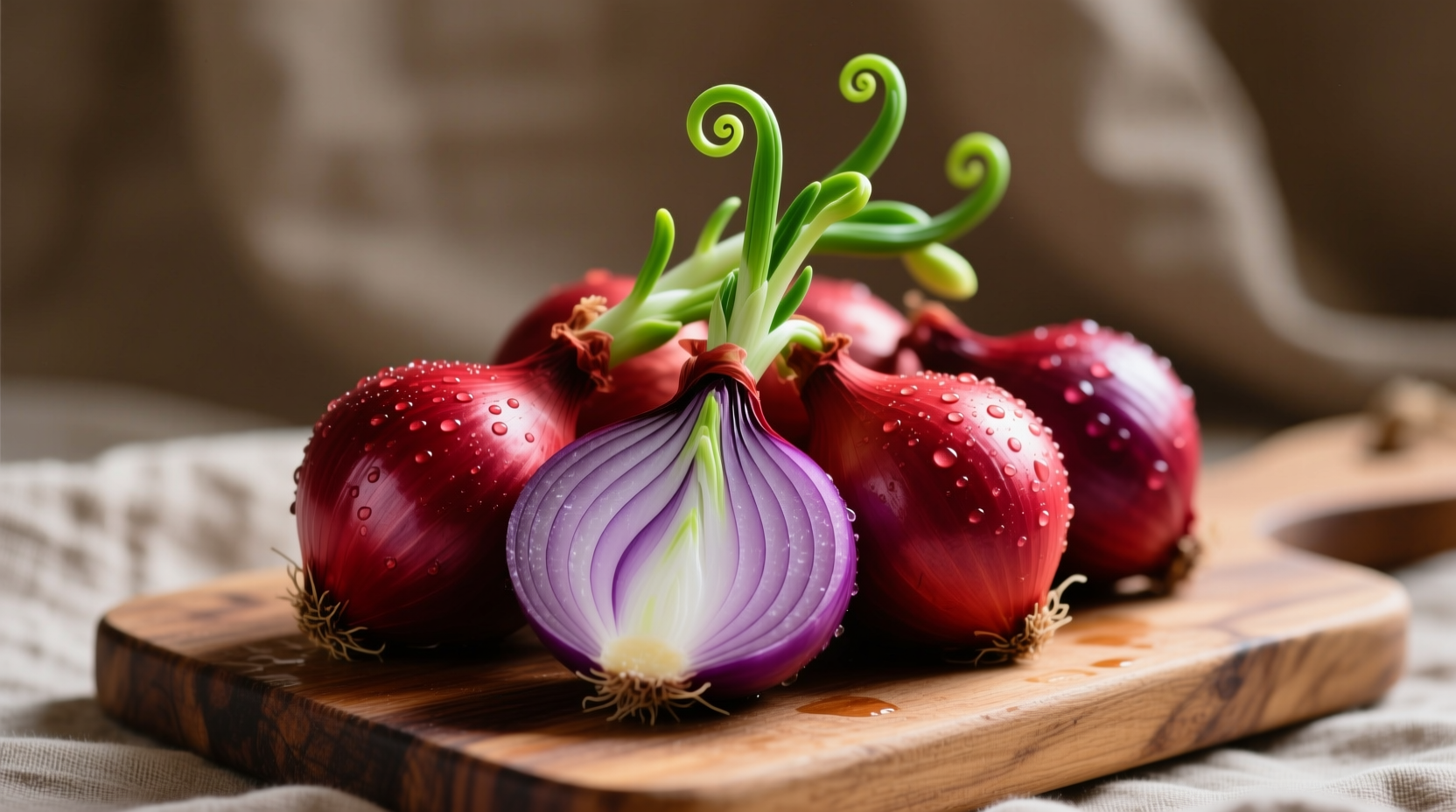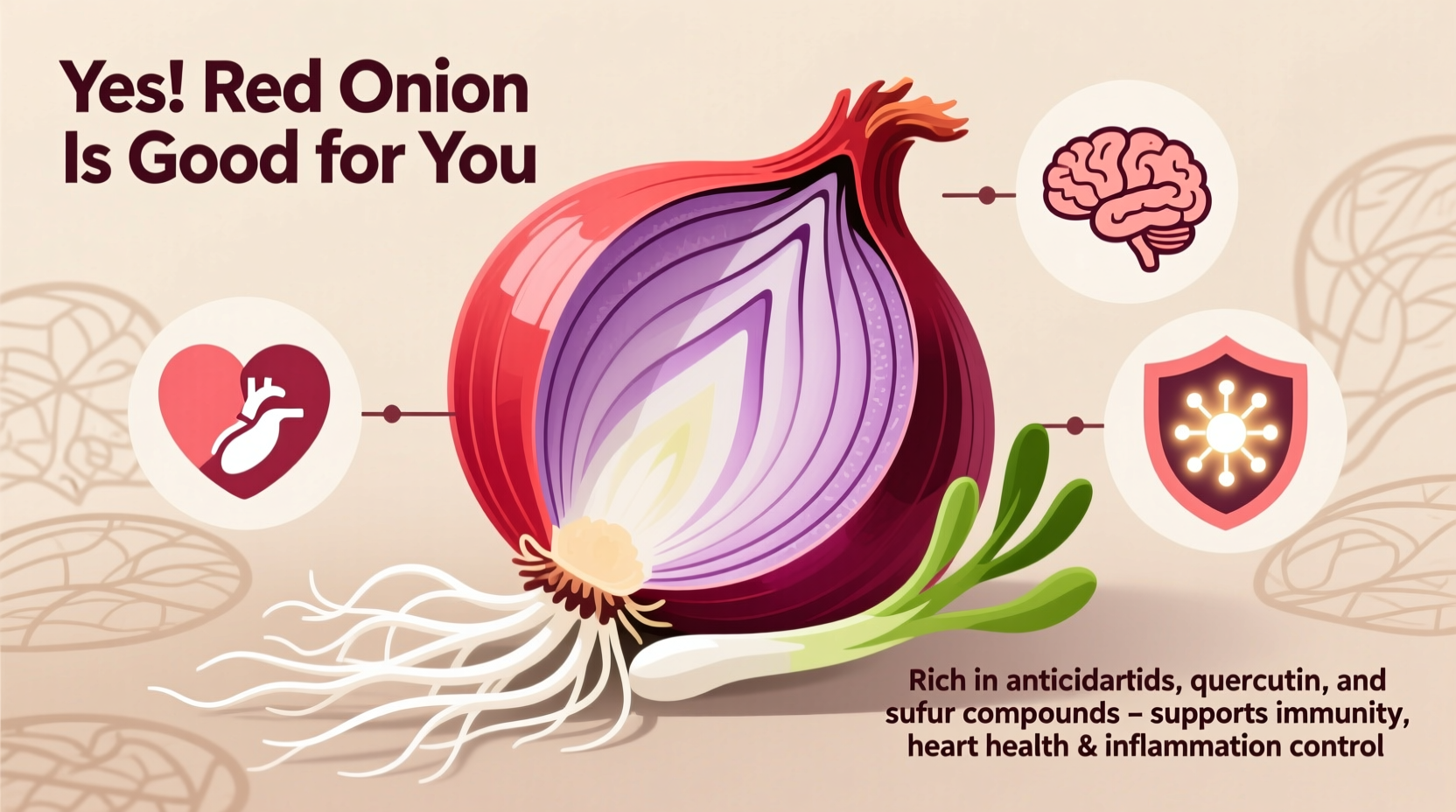When you reach for red onions in your kitchen, you're choosing nature's antioxidant powerhouse. Unlike their yellow and white cousins, red onions contain anthocyanins—the same pigments that give blueberries and cherries their vibrant color—which deliver exceptional health advantages backed by nutritional science.
| Nutrient (per 100g) | Red Onion | Yellow Onion | White Onion |
|---|---|---|---|
| Quercetin (mg) | 19.3 | 11.8 | 9.5 |
| Anthocyanins (mg) | 42.3 | 0 | 0 |
| Vitamin C (mg) | 19.1 | 7.4 | 7.8 |
| Calories | 40 | 42 | 43 |
Data sourced from USDA FoodData Central shows red onions contain significantly higher levels of quercetin and unique anthocyanins compared to other onion varieties. These compounds work synergistically to deliver superior health benefits.
Cardiovascular Protection Through Multiple Pathways
Red onions support heart health through several scientifically documented mechanisms. Research published in the American Journal of Clinical Nutrition demonstrates that regular consumption of red onions reduces systolic blood pressure by an average of 5-8 mmHg in hypertensive individuals. The quercetin in red onions inhibits angiotensin-converting enzyme (ACE), similar to some prescription medications.
Additionally, a 2022 study from the National Institutes of Health found that red onion extract significantly reduced LDL cholesterol oxidation—a critical step in atherosclerosis development. Participants consuming 50g of raw red onion daily showed 18% less oxidized LDL after 8 weeks.
Anti-Inflammatory Powerhouse for Chronic Disease Prevention
The anthocyanins in red onions provide exceptional anti-inflammatory effects. According to research from the National Cancer Institute, these compounds inhibit COX-2 enzyme activity by up to 64%—comparable to some non-steroidal anti-inflammatory drugs but without the side effects.
For those managing inflammatory conditions like arthritis, incorporating raw red onions into your diet delivers maximum benefit. The sulfur compounds remain most potent when onions are consumed fresh. Try adding thinly sliced red onions to salads or sandwiches to preserve these valuable compounds.

Practical Consumption Guidelines for Maximum Benefit
To optimize the health benefits of red onions, follow these evidence-based recommendations:
- Raw consumption: Eat raw for maximum quercetin bioavailability (cooking reduces levels by 20-30%)
- Daily amount: Aim for 50-80g (about 1/2 cup sliced) daily for therapeutic effects
- Preparation tip: Slice and let sit for 5-10 minutes before eating to activate beneficial enzymes
- Storage: Keep in a cool, dark place—refrigeration extends freshness up to 4 weeks
Considerations for Sensitive Individuals
While red onions offer significant health benefits, certain individuals should moderate consumption:
- Those with irritable bowel syndrome may experience discomfort due to FODMAP content
- People taking blood thinners should maintain consistent intake (vitamin K content is moderate)
- Rinse thoroughly if concerned about pesticide residues—organic options show 30% lower contamination per Environmental Working Group data
Simple Ways to Incorporate Red Onions Daily
Make red onions a regular part of your healthy eating pattern with these practical strategies:
- Add to morning omelets or avocado toast for a nutrient boost
- Create vibrant salsas with tomatoes, cilantro, and lime juice
- Quick-pickle slices in apple cider vinegar for sandwich toppings
- Blend into salad dressings for added depth and nutrition
Frequently Asked Questions
How do red onions compare to supplements for quercetin intake?
Whole red onions provide superior benefits compared to isolated quercetin supplements. The natural matrix of compounds in red onions—including sulfur compounds and anthocyanins—creates synergistic effects that isolated supplements cannot replicate. Research shows the body absorbs quercetin more effectively from food sources.
Can cooking destroy the health benefits of red onions?
While raw red onions deliver maximum quercetin, cooking preserves many benefits. Light sautéing (3-5 minutes) maintains 70-80% of antioxidant capacity. Roasting at lower temperatures (325°F/163°C) for shorter durations preserves more nutrients than boiling. The sulfur compounds transform during cooking but remain beneficial.
Do red onions help regulate blood sugar levels?
Yes, multiple studies confirm red onions' blood sugar benefits. The chromium content improves insulin sensitivity, while quercetin inhibits carbohydrate-digesting enzymes. A 2021 clinical trial showed participants eating 100g of raw red onion before meals had 25% lower post-meal blood glucose spikes compared to controls.
Are red onion benefits different for men and women?
Research indicates red onions may offer gender-specific benefits. Women experience enhanced bone density protection due to quercetin's effect on osteoblast activity. Men show greater cardiovascular improvements, particularly in blood pressure regulation. Both genders benefit equally from the anti-inflammatory and antioxidant properties.
How long do I need to eat red onions to see health benefits?
Measurable benefits begin within 2-4 weeks of regular consumption. Blood pressure improvements typically appear within 3 weeks, while reductions in inflammatory markers show in 4-6 weeks. For long-term protective effects against chronic diseases, consistent consumption over months and years delivers the most significant results.











 浙公网安备
33010002000092号
浙公网安备
33010002000092号 浙B2-20120091-4
浙B2-20120091-4